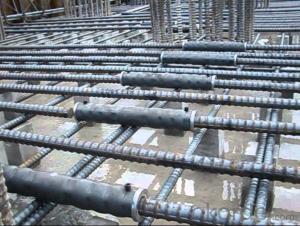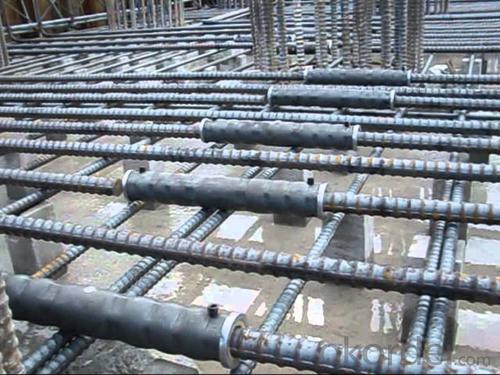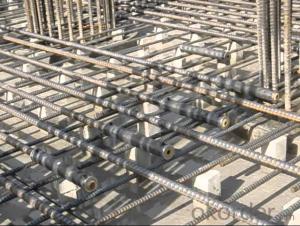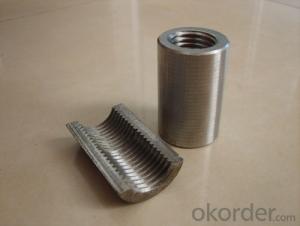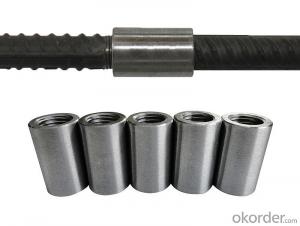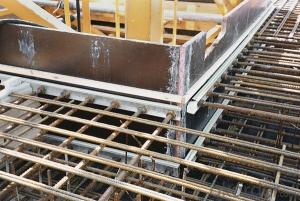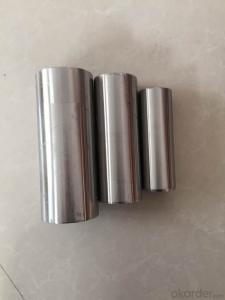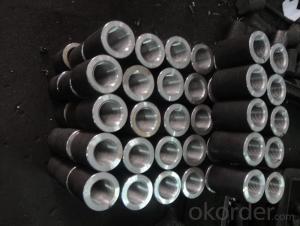Steel Coupler Rebar Scaffolding Truss Aluminum Scaffolding Beam With Low Price
- Loading Port:
- Shanghai
- Payment Terms:
- TT OR LC
- Min Order Qty:
- 5000 pc
- Supply Capability:
- 10000000 pc/month
OKorder Service Pledge
OKorder Financial Service
You Might Also Like
Steel Coupler Rebar Scaffolding Truss Aluminum Scaffolding Beam With Low Price
1.Description:
Lapped joints are not always an appropriate means of connecting rebar. The use of Steel Rebar Couplers can simplify the design and construction of reinforced concrete and reduce the amount of reinforcement required.
The threaded steel coupler system is designed as a threaded reinforcement connection with 100% load transmission. The steel coupler rebar connection system is suitable for both static and dynamic load transmission in construction joints.
The coupler is designed as a threaded reinforcement connection for formed construction joints. Reinforcement work is normally carried out on both sides of the construction joint using lap joints or one side is anchored. The bar lengths are based on the structural analysis requirements of the building component and are calculated from anchorage and lap lengths.
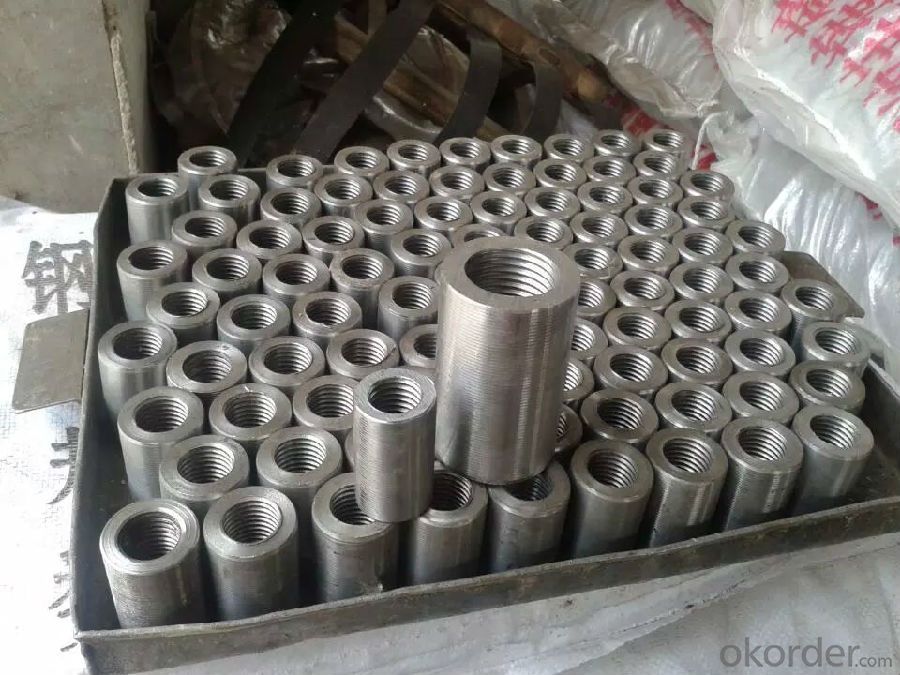
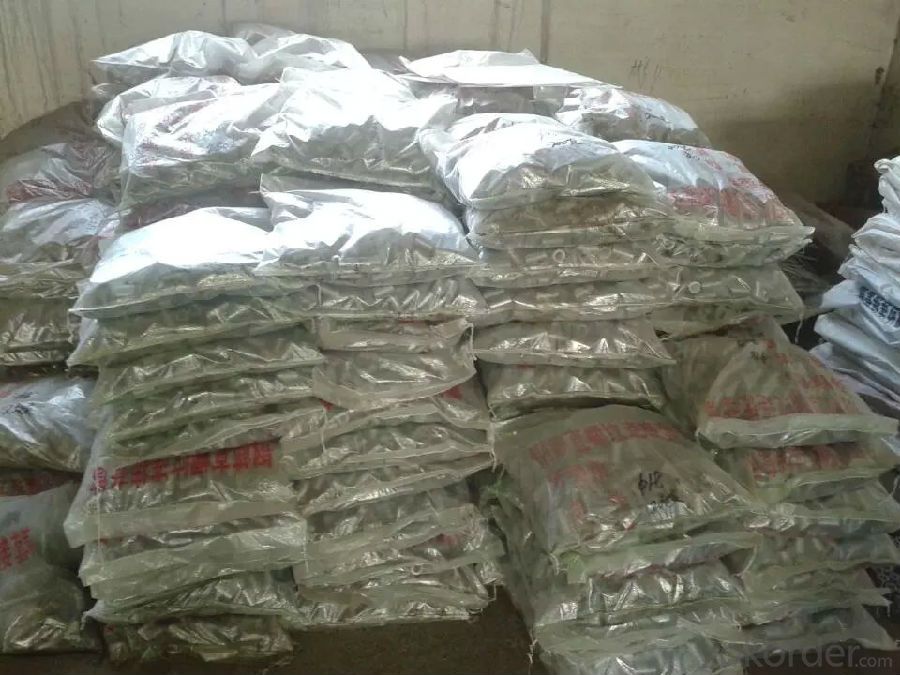
2.Advantages of Steel Coupler Rebar Lift Scaffolding Galvanized Scaffolding Tube with Low Price:
The coupler system provides the opportunity to connect rebars quickly, easily and cost effectively, even when large rebar diameters are used. This makes the steel coupler rebar range a logical extension to our rebendable CNBM reinforcement continuity system for rebars over 12 mm.
3.Available sizes of Steel Coupler Rebar Lift Scaffolding Galvanized Scaffolding Tube with Low Price:
14mm,16mm,18mm,20mm,22mmm,25mm,28mm,32mm,36mm,40mm
4.Delivery:
Delivery Term: FOB / CFR / CIF available.
Delivery Time: 15 days or less after order confirmed.
5.Why choose us?
Technical Expertise
Experienced Management
Stringent Quality Control
Exemplary Service
On-Time Delivery
Wide Product Range
Competitive Pricing
Huge branch network capable of catering worldwide
- Q: What are the different types of reinforcement systems used with steel formwork?
- Steel formwork in construction projects commonly employs various types of reinforcement systems to enhance strength and stability. These systems aim to withstand the weight of concrete and other loads. Rebar, or steel bars/rods, represents a prevalent reinforcement system. It is typically positioned horizontally and vertically within the formwork, forming a grid-like structure. This arrangement evenly distributes concrete weight and prevents potential cracks or failures. Wire mesh or welded wire fabric serves as another reinforcement system. It comprises a grid of wires laid over the formwork before concrete pouring. The wire mesh reinforces the concrete, providing added strength and durability. Sometimes, steel formwork incorporates precast concrete elements as reinforcement. Precast beams or columns are placed within the formwork to enhance support and reinforcement. Certain formwork systems utilize post-tensioning techniques for reinforcement. This involves the installation of steel cables or bars within the formwork, applying tension after concrete pouring. This technique heightens the formwork and structure's strength and stability. Ultimately, the selection of a reinforcement system depends on project-specific requirements, such as load capacity, design specifications, and desired durability. By employing appropriate reinforcement systems, steel formwork can achieve greater strength and reliability, ensuring project success and safety.
- Q: How does steel formwork contribute to the overall durability of the structure?
- Steel formwork is an essential component in the construction industry, and its use significantly contributes to the overall durability of a structure. One of the primary reasons for this is the inherent strength and durability of steel itself. Steel formwork is made from high-quality steel, which is renowned for its exceptional strength and resilience. The robustness of steel formwork ensures that it can withstand the immense pressure exerted by the concrete during the pouring and curing processes. This is particularly important in the construction of large-scale structures, where the concrete load can be substantial. Steel formwork provides the necessary support to ensure that the concrete maintains its shape and form, preventing any deformations or cracks from occurring. Moreover, steel formwork is highly resistant to corrosion, which is a significant concern for construction materials exposed to moisture and environmental elements. This resistance to corrosion ensures that the formwork remains intact and retains its strength over time, even in harsh conditions. By preventing corrosion, steel formwork helps in maintaining the structural integrity of the concrete by avoiding any potential damage caused by rusting or deterioration. In addition to its strength and corrosion resistance, steel formwork is also known for its reusability. Unlike traditional timber formwork, steel formwork can be used multiple times, reducing the need for constant replacement. This not only saves costs but also minimizes waste and contributes to sustainable construction practices. The ability to reuse steel formwork ensures that the structural elements of a building are consistently strong and durable throughout the entire construction process. Furthermore, steel formwork provides a smooth surface finish to the concrete, enhancing the overall aesthetics of the structure. This smooth finish reduces the need for additional surface treatments, saving time and resources in the construction process. Additionally, it improves the durability of the structure by minimizing the risk of cracks and imperfections, which can weaken the overall integrity of the construction. In conclusion, steel formwork significantly contributes to the overall durability of a structure due to its strength, corrosion resistance, reusability, and ability to provide a smooth surface finish. By providing reliable support during concrete pouring, maintaining its structural integrity over time, and enhancing the aesthetics of the building, steel formwork plays a crucial role in ensuring that the structure remains durable and resilient for years to come.
- Q: Can steel formwork be used for projects with limited formwork stripping time?
- Yes, steel formwork can be used for projects with limited formwork stripping time. Steel formwork is known for its durability and strength, making it suitable for various construction projects. Unlike traditional formwork materials such as wood or plywood, steel formwork can withstand higher pressures and loadings, allowing for faster construction cycles. Steel formwork is often used in high-rise buildings, bridges, and infrastructure projects where time is of the essence. Its rigid structure allows for quick assembly and disassembly, minimizing the time required for formwork stripping. Additionally, steel formwork can be reused multiple times, further reducing construction time and costs. Furthermore, steel formwork offers precise dimensional control, ensuring accurate and consistent results. This is particularly important for projects with limited formwork stripping time, as any errors or inconsistencies in the formwork can lead to delays and additional work. However, it is important to note that steel formwork may require skilled labor and specialized equipment for installation and removal. Therefore, proper planning and coordination are crucial to ensure efficient and safe use of steel formwork for projects with limited formwork stripping time.
- Q: What are the different finishes that can be achieved with steel formwork?
- Some of the different finishes that can be achieved with steel formwork include smooth finishes, textured finishes, patterned finishes, and exposed aggregate finishes.
- Q: What are the common design considerations for steel formwork in hot climates?
- When designing steel formwork for utilization in hot climates, there are various common factors that must be considered. 1. Thermal Expansion: Steel possesses a high coefficient of thermal expansion, implying that it expands and contracts with temperature fluctuations. In hot climates, where temperatures can reach exceptionally high levels, it is crucial to account for this expansion in the formwork's design. Sufficient provision for expansion joints and allowances should be made to accommodate the thermal movement of the steel. 2. Heat Resistance: Steel formwork should be designed to endure elevated temperatures without experiencing significant deformation or loss of strength. This may involve the selection of steel grades with superior heat resistance or the implementation of additional cooling measures to prevent overheating. 3. Corrosion Protection: Hot and humid climates can expedite the corrosion process, necessitating the incorporation of effective corrosion protection measures in the design. This can be achieved through the utilization of corrosion-resistant coatings, such as galvanization or epoxy coatings, or by integrating sacrificial anodes to safeguard the steel against corrosion. 4. Ventilation: Hot climates typically necessitate adequate ventilation to prevent the accumulation of heat and moisture within the formwork. Appropriately designed openings and vents should be included to facilitate air circulation and avert the formation of condensation, which can lead to corrosion and diminish the formwork's lifespan. 5. Insulation: In exceedingly hot climates, insulation can assist in minimizing the transfer of heat to the formwork, thereby reducing the impact of thermal expansion and diminishing the risk of deformation. Insulation materials, such as foam or reflective coatings, can be employed to create a barrier between the steel formwork and the external environment. 6. Durability: The design of steel formwork should account for the long-term durability requirements of the project. This includes the selection of materials and construction methods that exhibit resistance to degradation caused by UV radiation, extreme temperatures, and other environmental factors commonly encountered in hot climates. In summary, the design of steel formwork for use in hot climates necessitates careful consideration of thermal expansion, heat resistance, corrosion protection, ventilation, insulation, and durability. By addressing these factors, the formwork can endure the challenges posed by hot climates and ensure the successful completion of construction projects.
- Q: How does steel formwork compare to aluminum formwork?
- In construction projects, two popular types of formwork systems are utilized: steel formwork and aluminum formwork. While both options have their pros and cons, several notable distinctions set them apart. Strength and Durability: Steel formwork boasts exceptional strength and durability, making it ideal for heavy-duty construction projects. It can withstand high load capacities and is resistant to deformation. Conversely, aluminum formwork, although lighter, lacks the same level of strength as steel. It is more suitable for smaller-scale projects that do not require heavy loads. Weight and Handling: Steel formwork is significantly heavier than aluminum formwork. This disparity can make transportation and handling more challenging, demanding more labor and machinery. On the other hand, aluminum formwork, being lightweight, is easier to handle and transport, minimizing the need for additional resources. Cost: Steel formwork tends to be pricier than aluminum formwork due to its superior strength and durability. However, steel formwork has a longer lifespan and can be reused multiple times, potentially making it more cost-effective in the long run. In contrast, aluminum formwork is cheaper initially but may necessitate more frequent replacement due to its lower durability. Versatility and Adaptability: Steel formwork can be tailored to fit various shapes and sizes, providing greater design flexibility. It is highly adaptable, allowing for on-site modifications if necessary. Conversely, aluminum formwork is less versatile and typically comes in standard sizes. Consequently, more planning and precision are required during the design phase. Surface Finish: Steel formwork typically yields a smoother and more uniform surface finish compared to aluminum formwork. This is crucial for projects where the appearance of concrete elements is of utmost importance, such as architectural structures. Environmental Impact: Aluminum formwork is considered more environmentally friendly than steel formwork. Aluminum can be recycled and reused more easily, thus reducing its carbon footprint. Conversely, steel requires more energy and resources for production and recycling. In conclusion, steel formwork and aluminum formwork each possess distinct advantages and disadvantages. Steel formwork excels in strength, durability, and surface finishes but is heavier, costlier, and less environmentally friendly. On the other hand, aluminum formwork is lighter, cost-effective, and easier to handle but lacks equal strength and durability. Ultimately, the choice between the two depends on the specific requirements of the construction project and the priorities of the contractor or builder.
- Q: What are the different accessories required for steel formwork maintenance?
- The following are the various accessories needed to maintain steel formwork: 1. To maintain the smooth surface of the formwork and prevent corrosion or damage, formwork cleaning agents are used to remove any concrete residue or build-up on the steel formwork. 2. Prior to pouring concrete, formwork release agents are applied to the steel formwork to prevent it from sticking. This makes it easier to remove the formwork once the concrete has cured. 3. Formwork patching compounds are used to fix any damages or imperfections on the steel formwork. This helps maintain the formwork's structural integrity and ensure its longevity. 4. To ensure smooth operation and prevent friction or wear and tear, formwork oil or grease is applied to the moving parts of the steel formwork, such as hinges or sliding mechanisms. 5. Formwork ties and connectors are used to secure the formwork panels together during concrete pouring, ensuring stability. They should be regularly inspected and replaced if damaged or worn out. 6. Formwork wedges and pins are used to align and secure the formwork panels in place. Regular checks should be done to ensure proper positioning and stability. 7. Formwork clamps and brackets are accessories used to support and hold the formwork panels in position. They should be inspected for any signs of damage or weakness and replaced if necessary. 8. To clean the steel formwork and prevent the accumulation of dirt or debris, formwork cleaning tools such as brushes, scrapers, and high-pressure washers are used. 9. Racks, trolleys, or storage containers are used as storage and transportation equipment for the steel formwork. Proper storage and transportation ensure the formwork's longevity and prevent any damage or distortion. In summary, the various accessories needed for steel formwork maintenance are essential for optimal performance, durability, and safety during concrete construction projects.
- Q: How does steel formwork prevent concrete segregation?
- Steel formwork helps prevent concrete segregation by providing a rigid and stable structure for the concrete to be poured into. Unlike other types of formwork materials such as wood or plastic, steel formwork maintains its shape and prevents any movement or deformation during the pouring and curing process. Concrete segregation occurs when the different components of concrete, such as cement, aggregates, and water, separate from each other, resulting in an uneven distribution of these components within the mixture. This can weaken the concrete structure and lead to various issues such as reduced strength, cracking, or voids. Steel formwork prevents concrete segregation by offering a smooth and even surface for the concrete to be poured onto. The rigid nature of steel ensures that there are no gaps or spaces for the components of the concrete to separate or settle unevenly. This helps to maintain a consistent and uniform distribution of the cement, aggregates, and water throughout the entire concrete mixture. Additionally, steel formwork provides a tight seal against the sides and bottom of the form, preventing any leakage or loss of moisture during the curing process. This helps in maintaining the required water-cement ratio, which is crucial for the proper hydration and hardening of the concrete. By preventing excessive evaporation or moisture loss, steel formwork ensures that the concrete cures evenly, reducing the chances of segregation. Furthermore, the use of steel formwork allows for precise and accurate placement of the concrete, eliminating any potential gaps or voids that could contribute to segregation. The steel formwork can be designed with various features such as tie rods, clamps, or connectors to hold the formwork panels securely in place, ensuring that the concrete is poured and compacted uniformly. In summary, steel formwork prevents concrete segregation by providing a stable and rigid structure that maintains the shape and integrity of the concrete mixture. It prevents the separation of components, ensures a consistent distribution of materials, and allows for precise and accurate placement of the concrete, resulting in a stronger and more durable structure.
- Q: How does steel formwork affect the overall safety of a building project?
- Steel formwork plays a crucial role in enhancing the overall safety of a building project. Firstly, steel formwork is known for its high strength and durability, which ensures a stable structure during the construction process. This stability is essential in preventing accidents such as collapses or structural failures that can cause serious injuries or fatalities. Moreover, steel formwork provides a secure and reliable platform for workers to perform their tasks. The rigid structure minimizes the risks of slips, trips, and falls, which are common causes of accidents on construction sites. Additionally, steel formwork can be designed to include safety features such as handrails, guardrails, and non-slip surfaces, further enhancing worker safety. Another significant advantage of steel formwork is its fire-resistant properties. Steel is non-combustible, meaning it does not contribute to the spread of fire. This characteristic significantly reduces the potential for fire-related accidents in a building project, safeguarding both the workers and the structure itself. Furthermore, steel formwork is highly resistant to adverse weather conditions, such as heavy winds, rain, or earthquakes. This resistance ensures that the structure remains stable and secure even during extreme weather events, minimizing the risks of accidents or damage caused by these external factors. Lastly, steel formwork offers better quality control compared to other types of formwork materials. The precise and consistent dimensions of steel formwork reduce the chances of errors or inconsistencies in the construction process, resulting in a safer and more reliable end product. In conclusion, steel formwork positively impacts the overall safety of a building project by providing stability, a secure working platform, fire resistance, weather resistance, and improved quality control. These factors collectively contribute to reducing the risks of accidents, injuries, and structural failures, making steel formwork an essential component in ensuring a safe construction environment.
- Q: Can steel formwork be used for staircase construction?
- Yes, steel formwork can be used for staircase construction. Steel formwork provides strength, durability, and stability, making it suitable for constructing staircases. It offers a smooth finish and allows for precise shaping and customization to meet specific design requirements. Additionally, steel formwork can be easily dismantled, reused, and adjusted, making it a cost-effective option for staircase construction.
Send your message to us
Steel Coupler Rebar Scaffolding Truss Aluminum Scaffolding Beam With Low Price
- Loading Port:
- Shanghai
- Payment Terms:
- TT OR LC
- Min Order Qty:
- 5000 pc
- Supply Capability:
- 10000000 pc/month
OKorder Service Pledge
OKorder Financial Service
Similar products
Hot products
Hot Searches
